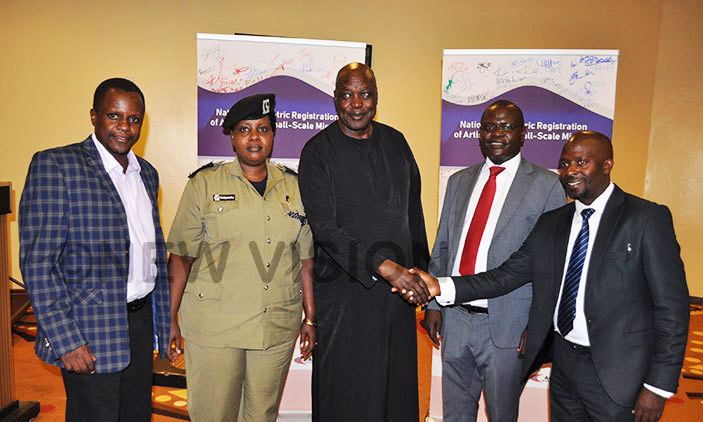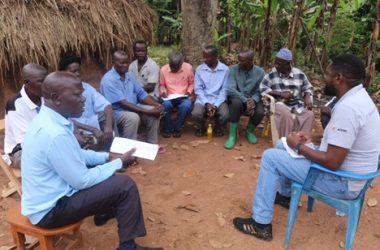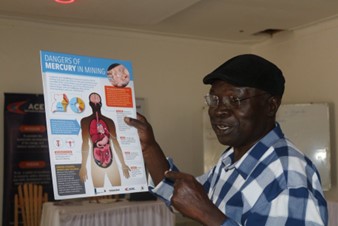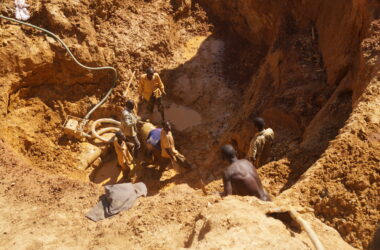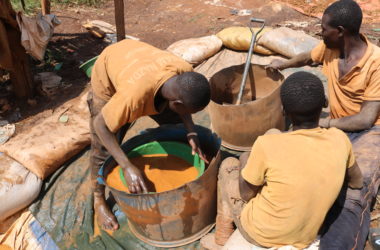Bukya John Bosco, the chairman Uganda Artisanal and Small Scale Miners (UGAASM) believes the on going biometric registration of ASMs will organize the sector and steer it towards better productivity.
“We are now working with government to organise ASMs,” he says, “It is evident in the BRASM (Biometric Registration of Artisanal and Small Scale Miners) exercise, which was commissioned by government that government is now interested in knowing how many miners we have in the country, and where they are.”
Once we to know the number, he says, then planning, regulating and coordinating of their activities will be very easy. Bukya’s voice is critical because he is a senior artisanal miner and speaks for a sector, which despite being a source of livelihood for millions of Ugandans has for years been largely neglected.
Indeed, for many, the BRASM project appears like a new beginning for ASMs.
Peter Lokeris, the State Minister for Minerals Development while launching the project at Royal Suites, Bugolobi on March. 29, said government recognizes the development role of the ASM sub-sector, which must be well organized to realize its full potential.
Government, he noted, is implementing a Mineral Wealth and Mining Infrastructure Development Project that is aimed at the development of an effective ASM management strategy.
The BRASM project, which will be implemented by the African Centre for Energy and Mineral Policy (ACEMP), is part of this effort.
According to Eng. Vincent Kedi, the principal engineer at the Directorate for Geological Survey and Mines (DGSM), more than 90% of the minerals mined in Uganda are produced by ASMs yet at the sametime more than 80% of the ASMs are unlicensed although they pay fees to local governments and land owners.
But following registration, he noted, the ASM sector would be managed as a light industry to ensure that they contribute to development.
The registration project follows a directive of President Yoweri Museveni, which came in the aftermath of the Mubende ASM evictions from
Kitumbi-Kayonsa in August, 2017.
The evictions which were due to a dispute between the license holder and the ASMs mining in the area led to the eviction of over 60,000 people, 20,000 of whom were miners.
Also ASM operations had been a downside of an unregulated mining sector causing dire occupational and community risks, poor environmental practices, practices of gender inequalities, corruption, human rights abuses, a poor culture of savings, limited skills and rampant illegal operations characterize the ASM sub-sector in Uganda.
To respond to these socio-economic and environmental issues of importance, Uganda put in place a National Strategy for the Advancement of ASM with support from the World Bank’s funded SMRRP Project which inter-alia sought to harness ASM’s remarkable development potential while recognizing the dangers faced by the youth, women and men involved in ASM operations.
BRASM is a follow-up and re-activation of the ASM Strategy for the Advancement of ASM in Uganda.
The project will entail mapping of relevant stakeholders and establishment of a forum to discuss opportunities, challenges and lay strategies for the subsector; analysis and provision of a baseline of the ASM subsector; establishment of inter-linkage mechanisms with other entities involved in ASM initiatives; review of the existing ASM management strategy and; the biometric registration and issuance of certificates of registration tied to areas of operation by ASMs.
Mechanisms to regulate ASMs movements from one mining area to another will be developed as well as an industry approach to encourage ASM participation in supply chain initiatives and a tool for monitoring, evaluation and improvement of ASM practices.
This 18 months project will continue being rolled out to the necessary areas as they continue to grow.
Programs Officer,
Africa Centre for Energy and Mineral Policy (ACEMP)

